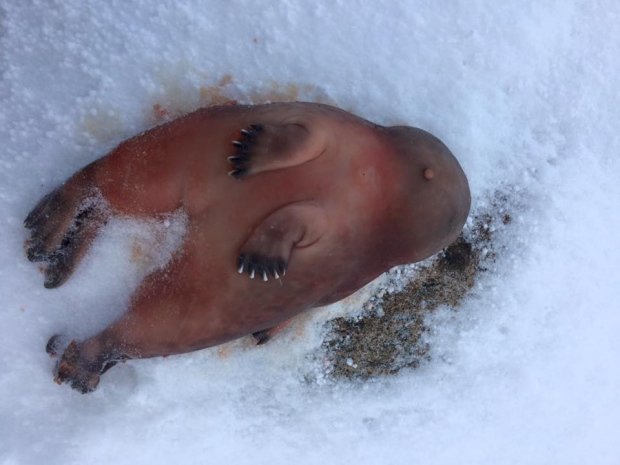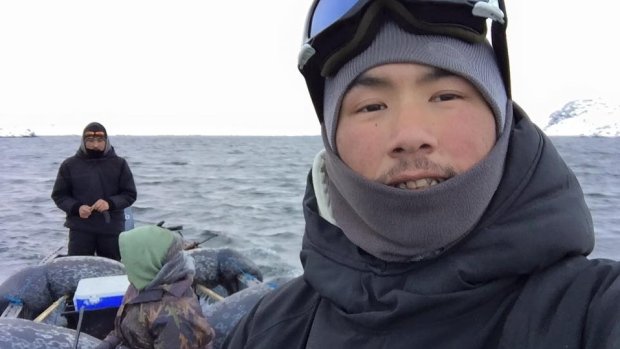
He assumed the seal was pregnant, and pregnant it was — but what he found in its womb was what he called, in Inuktitut, a total surprise.
He began to skin the ringed seal — a normal hunting procedure. That quickly took an unexpected turn.
"I noticed in the uterus two sets of flippers, so I was expecting to pull out two seal pups," said Elijassiapik, who said it's rare for a seal to give birth to two seal pups.
"In fact, it was only one conjoined seal pup at the head."
Elijassiapik, who has been hunting since his father taught him at a young age, said he has never seen anything like it.

But this wasn't the only surprising seal abdomen Elijassiapik has seen recently.
Two weeks earlier, he found a seal who had another abnormally swollen belly. He said there was a strange lump on its stomach.
When he butchered this seal, an unusual yellow-green pus oozed out, he said.
Both of the strange seals were left behind under the instruction of an elder of Elijassiapik's community.
'Almost heartbreaking ... mess-up of biology' says prof
"I have never seen this... ever," said Sara Iverson, a professor of biology at Halifax's Dalhousie University who specializes in marine mammals.
She has studied reproduction in seals for 36 years.
"It's almost heartbreaking in a sense because it's such a mess-up of biology," said Iverson. "But in another sense, it's just fascinating."
Looking at the photos sent to her by CBC News, Iverson described the twins as almost neck and neck, chins attached together, and noted that the two sets of bodies were separate right beneath the abdomen.
"God that is just amazing," she said.
At first glance, Iverson said the specimen was a conjoined twin fetus, a rare phenomenon.
She said there's too little information to speculate on the cause of the malformation, but some theories include errors in cellular division, genetic defects, environmental factors, or a combination of the above. One way twins conjoin is through a process called fetus in fetu, where a dominant twin absorbs in the other, said Iverson.
"But I would say, if stuff like this was found again, it would be really important to save the specimen, get them in a freezer and ship it to an animal pathologist," she said.
She said there are only a handful of reports of this birth defect in seals around the world.
"This might be the first-ever report in ringed seals," said Iverson.
Conjoined harbour seal fetus in the U.S. in 2013
But there was a report of a conjoined seal fetus in the U.S. in 2013. A harbour seal — a more common type of seal found across the Northern Hemisphere — died on the shores of Olga, Wash., giving birth to the conjoined fetus.
"The cause of this unique anomaly — a first for this species — was not identified," states a 2016 journal article in the Journal of Wildlife Diseases.
Iverson said the ringed seal carrying the recently discovered conjoined seal fetus would have either had a stillbirth or died giving birth.



Reader Comments
to our Newsletter